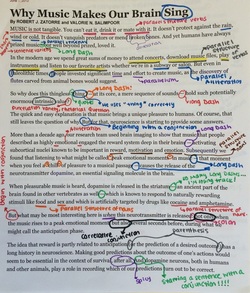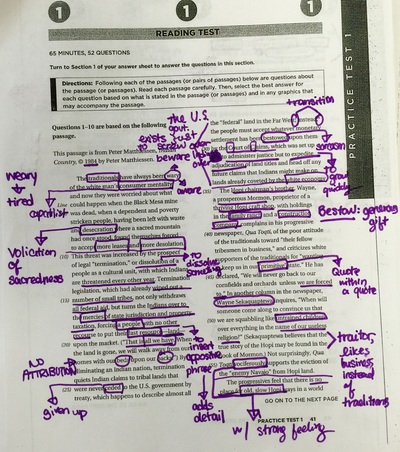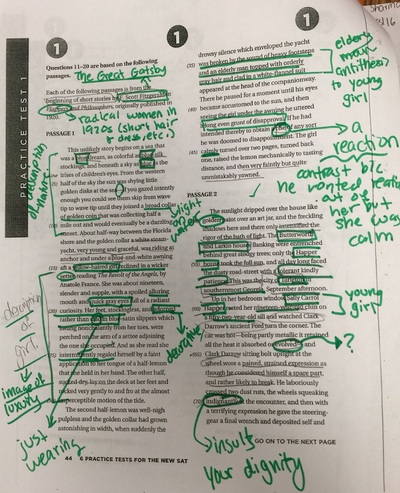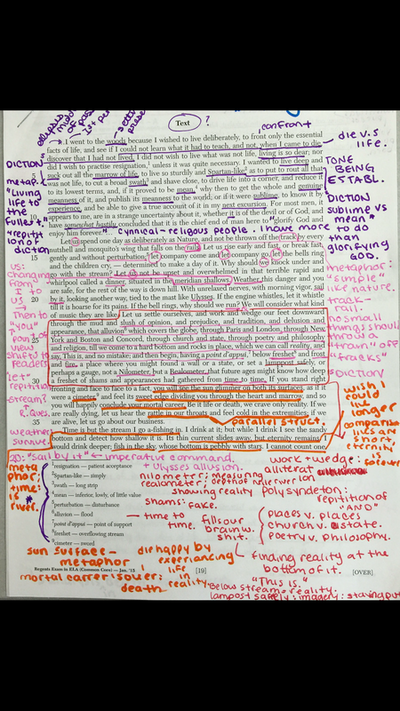You can't teach reading comp
but you can teach note-taking
It's a tough task and every English educator knows how important it is to improve our students' ability to "read this, answer these". After all, this task is on every national, state, and local exam that measures reading ability.
Rather than focus on the questions, I focus on the reading passages. I specifically guide my students through a note-taking process where I can reinforce my writing lessons, explain difficult terms or phrases, and elaborate on the subject matter.
Look carefully at the notes taken in these three examples and you will see how I pointed out everything from transition techniques to rhetorical strategies and everything in between. I literally read the pieces aloud while constantly saying "circle this" or "write this down".
It's a funny mix of student-centered philosophy and teacher-dominated direct instruction. I'm convinced it is effective education -- the students are learning precisely how to read and take notes. Meanwhile, they are engaged in the annotating process, and I can see precisely which students are "with me" and which students need re-focusing.

This last picture is an example of one of my favorite exercises: students annotate a New York Times article for all the writing techniques taught in the course.
Click on the photo to enlarge it, and you will get a good sense of how I combine my reading and writing lessons under one umbrella.



 RSS Feed
RSS Feed